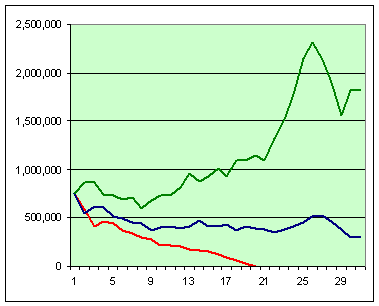obgyn65
Thinks s/he gets paid by the post
For what it's worth, I turn 49 in 2014 and plan for 2.5-3% SWR. Time horizon until age 95.
Midpack thanks for the tables, it was real enlightening. The biggest problem I have, and the main reason I joined this site, is that there is little information out there for extended retirement. I am currently only 40 years old. What would those tables look like out to 40 or 50 years of withdrawls? I have told myself that I want to shoot for a 3% SWR, but perhaps that is much too conservative. The difference between 3% and 4% would make a huge difference on when we could retire. But to be honest I would probably sleep better at night with 3%. I am not sure the stock market will be so robust as in the past.

